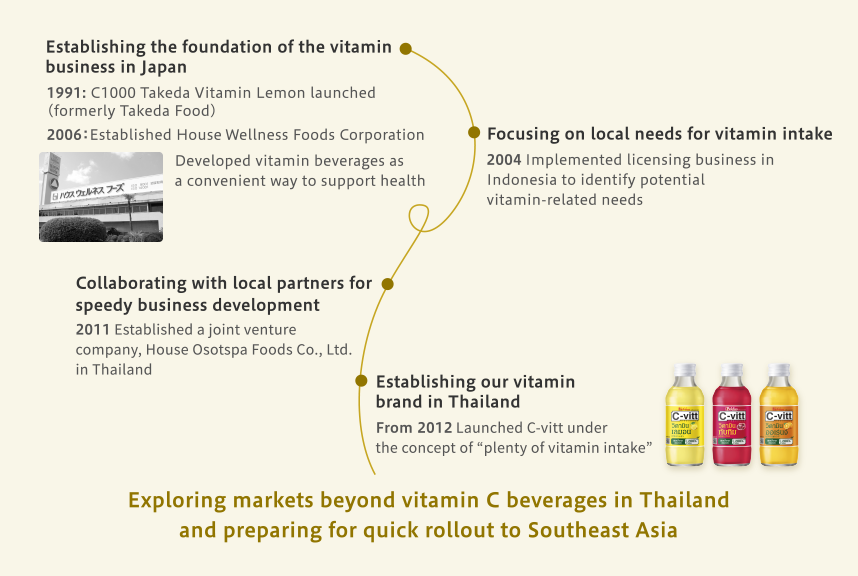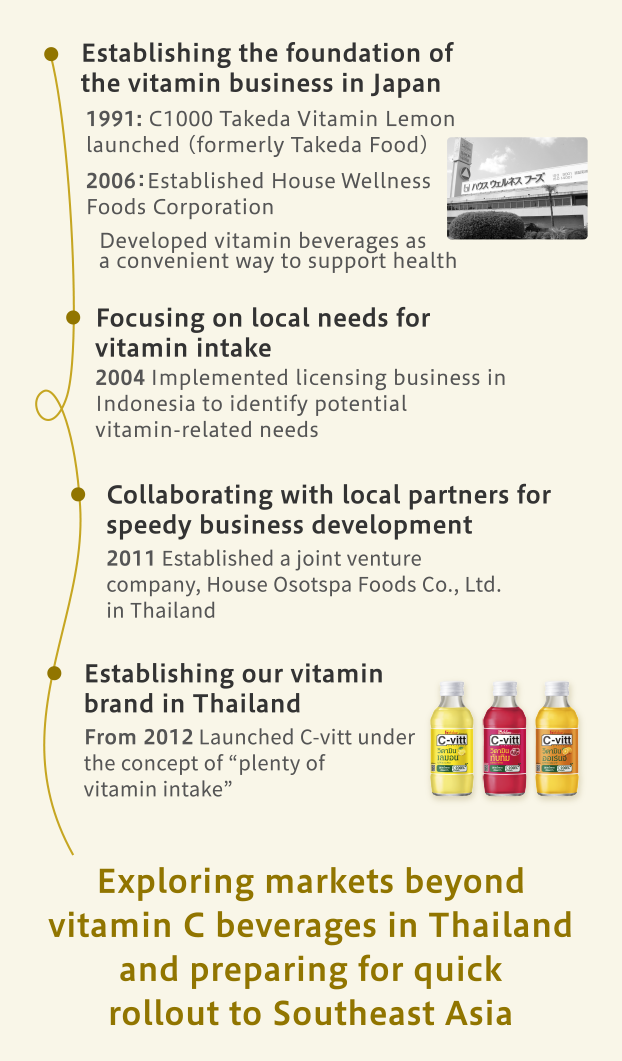Around the world, House Foods Group not only offers curry, but also engages in a variety of unique businesses. We have expanded our businesses by combining strengths developed in Japan with our ability to adapt to diverse food cultures, thereby creating new dining experiences that meet different needs in different countries and regions. Here we introduce three examples of business development outside Japan that are playing an important role in the promotion of our Four Value Chains(VC).
For details on Four Value Chains, see “Medium-Term Business Plan.”


Bringing Japanese-style
curry to China
—Building market share through
a multifaceted approach
and persistent marketing


Japanese-style curry is usually served as a single-dish meal. How could we promote this style of curry in China, a country that shares the same rice-eating culture as Japan, but where meals traditionally consist of multiple dishes? Suddenly introducing a Japanese-style curry product that is unfamiliar to the market was not likely to be well received by people in China, who may have never tasted it before. We embraced the challenge of developing this vast untapped market by drawing on our experience of transforming curry, which was not widely popular at the start of Japan’s economic boom, into a national dish.
Initially, our focus was on building awareness about the deliciousness of Japanese-style curry. We employed a comprehensive approach that leveraged the Group’s strengths in areas ranging from production and sales of processed food to restaurant operation, creating multiple touchpoints with customers.
The first touchpoint was the opening of a curry restaurant in Shanghai in 1997. We wanted to show people how good curry is and to find out whether there was a market for Japanese-style curry. After getting a good response, we launched a retort pouched curry product, followed by Vermont Curry in 2005. Inspired by the same concept of “mild curry enjoyed by the whole family” as in Japan, we tailored the flavor, color, and spice aroma to cater to local preferences. To inform people about the proper cooking methods and delicious taste of curry, we persistently and regularly held in-store food demos, serving the equivalent of 30,000 meals in a year, primarily in the major cities of Shanghai, Beijing, and Guangzhou.
Japanese-style curry, known for its ease of preparation, balanced nutrition, and appeal to both children and adults, is perfectly matched to the changing times, which are characterized by an increase in the number of nuclear families and dual-income households. This has led to an increase in its sales. Taking advantage of a stable system for local procurement, manufacturing, and sales, the consumption of curry in China has risen, mainly in coastal metropolitan areas. On the other hand, there is significant potential for growth in consumption outside major cities, and promotional efforts are underway to tap into this market. Furthermore, given its ease of preparation, curry is becoming more widely offered by local restaurants and other food service providers, as well as commercial businesses, resulting in the growing supply of curry as an ingredient. Our business in China, which has great growth potential, will drive the global expansion of the Spice VC.
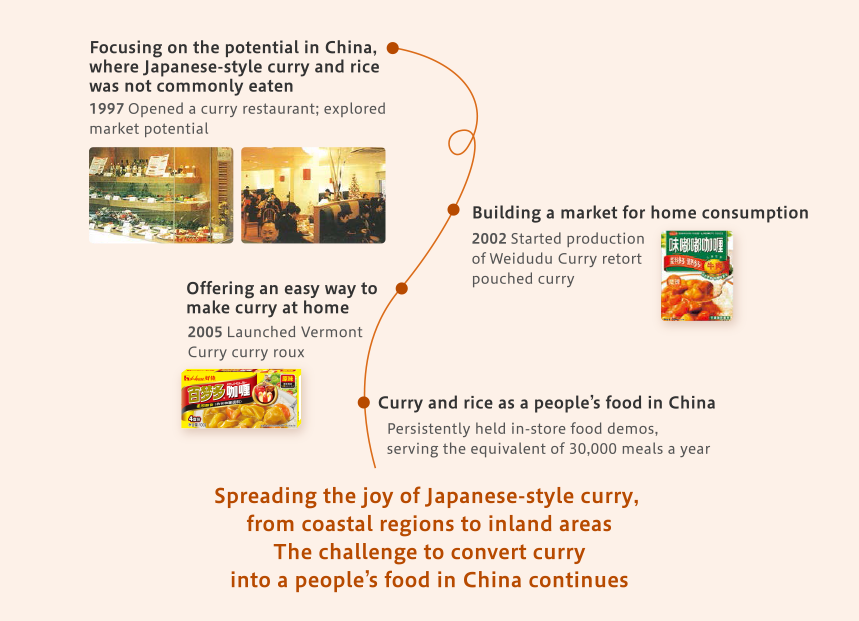
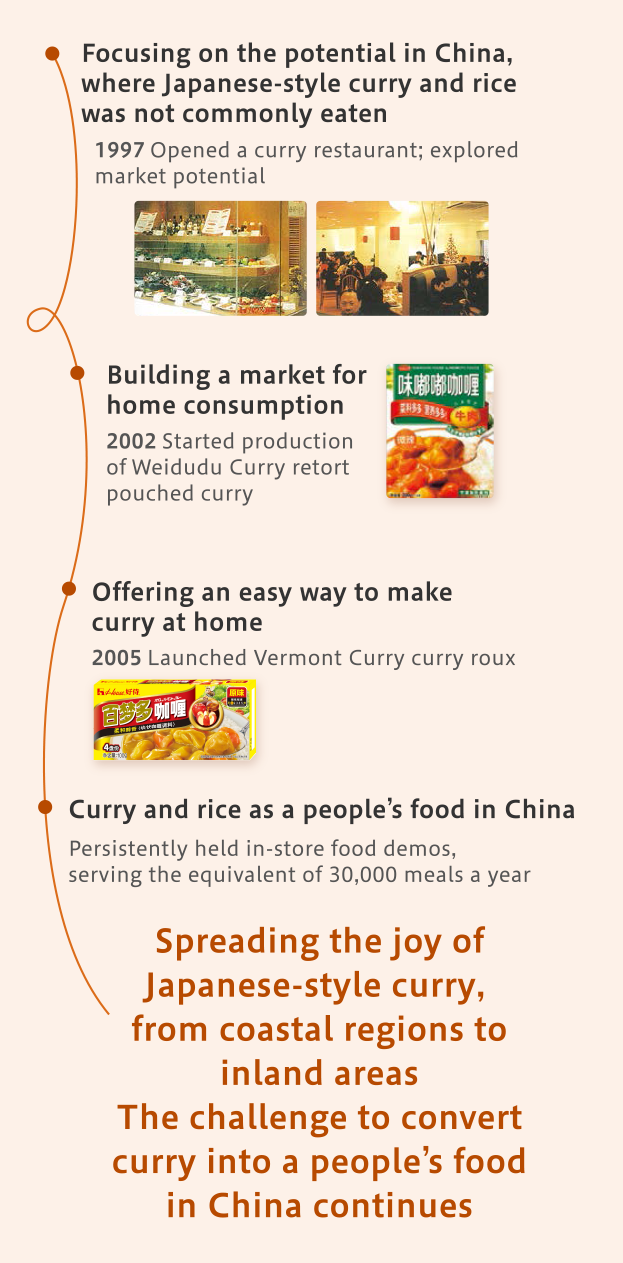
Bringing tofu to the U.S.
—Product development
adapted to various local uses

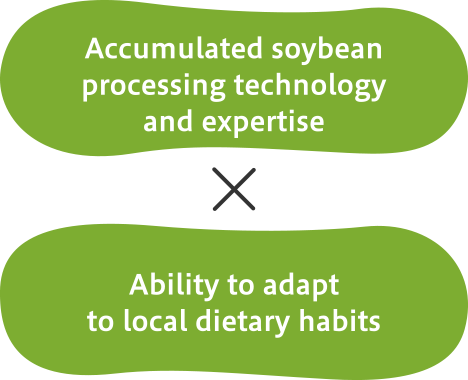
We have always paid attention to the potential of soybeans and we attempted to commercialize various tofu and soymilk products in Japan in the 1970s, but we were unable to achieve full-scale expansion. We wondered if we could utilize our technology and expertise in developing products using soybeans in the global market. It was during this time that we came across a Japanese company that was manufacturing tofu in the U.S., and we began to expand our business in the region. To begin with, tofu gained support mainly from people of Asian descent and vegetarians, then later expanded further as more people became aware of its health benefits and low environmental impact due to its plant-based nature.
We market tofu in the U.S. with six varieties of firmness. Asian American customers commonly express culture-based preferences for silken or firm tofu. On the other hand, customers who adopt tofu as a new food choose it in the context of local dietary habits as a substitute for meat. They use tofu that is even firmer so that it does not lose its shape during cooking, or use the softest form as an ingredient for smoothies. We gather daily information about these uses through onsite interviews and social media. After repeated trial and error, we proposed tofu together with cooking methods based on these dietary habits, and adapted to the local market.
In order to supply the product in the broader U.S. market, we developed a production process that achieves a 65-day shelf life and established a system to supply the product throughout the U.S. from our production bases in Los Angeles and New Jersey. We are also planning to construct a new plant with the aim of further business expansion.
In the U.S., awareness about climate change and ethical consumption is growing, especially among younger generations. In addition, the spread of Asian food culture is generating a tailwind for the increasing number of menu items that tofu can be easily incorporated into.
In September 2022, the Group welcomed Keystone Natural Holdings, LLC, which is engaged in the production and sale of tofu and plant-based meat substitutes in the U.S. With an eye toward business expansion in the U.S. and in Europe, we will expand the plant-based food (PBF) domain with tofu as a core product.
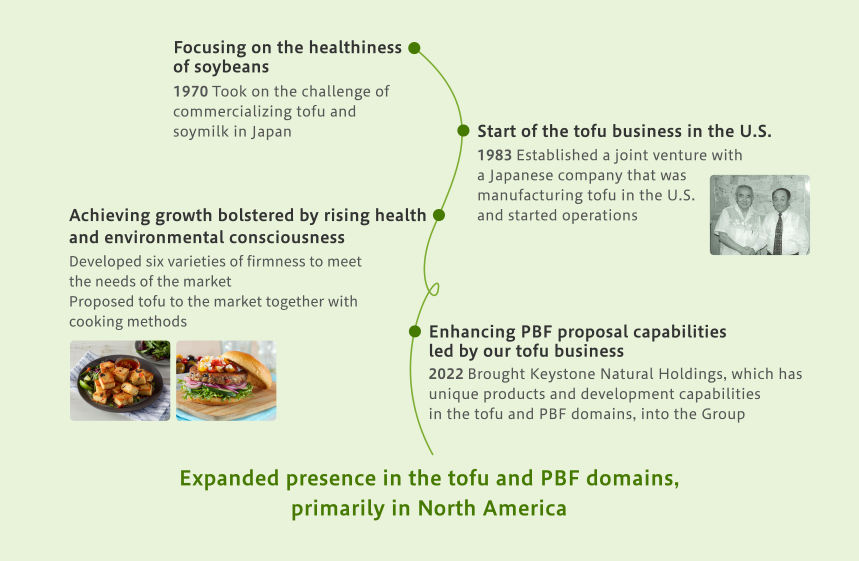
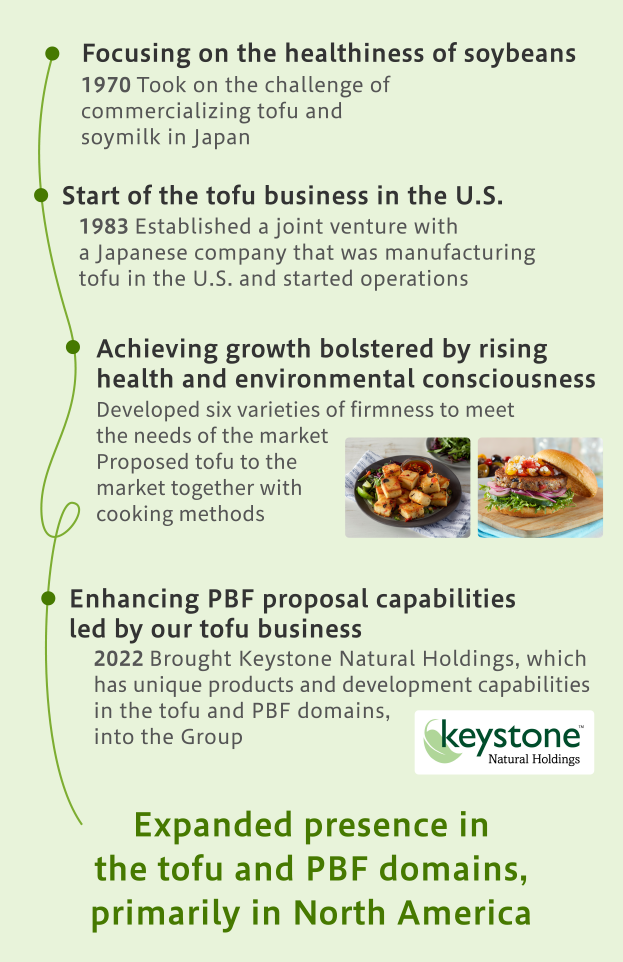
Bringing vitamin C beverages
to Southeast Asia
—Establishing a brand with
a focus on speed


We established a base for our functional beverage business in Thailand in 2011. We had previously identified potential needs in Southeast Asia through our licensing business in Indonesia and targeted Thailand, where there is strong interest in beauty and demand for products providing adequate vitamin C intake.
Although there were bottled beverages containing vitamins in Thailand at that time, there were no bottled beverages that were intended as an easy way to consume vitamins, like supplements. In response to such needs, we leveraged the technology and knowledge we had developed in Japan for stable production of vitamin beverages with both good taste and functionality in order to launch C-vitt under the concept of "plenty of vitamin C intake."
Unlike in the curry and tofu markets, there were already many local beverage manufacturers, and in-house production would not necessarily be a strength. In terms of sales, there was also a large established traditional market, and it would take a lot of time to build a sales network from scratch. Therefore, in order to develop the business as quickly as possible, we established a joint venture with a local company, Osotspa Co., Ltd. Osotspa took charge of upstream manufacturing and downstream sales, while the Group focused on its strengths in marketing, product development, and quality assurance. Through this business model, annual sales have surpassed 10 billion yen in the 10 years since commercialization, and we have established a position as a top brand in vitamin C beverages.
Going forward, we will continue to deepen our presence in Thailand by developing products other than vitamin C beverages, such as Ichinichi-bun No Vitamin (contains 13 types of vitamins) sold in Japan. In addition, as part of the Functional Ingredients VC, we will expand our vitamin beverage business in other regions of Southeast Asia through House Foods Group Asia Pacific Co., Ltd., which was established in April 2022.
